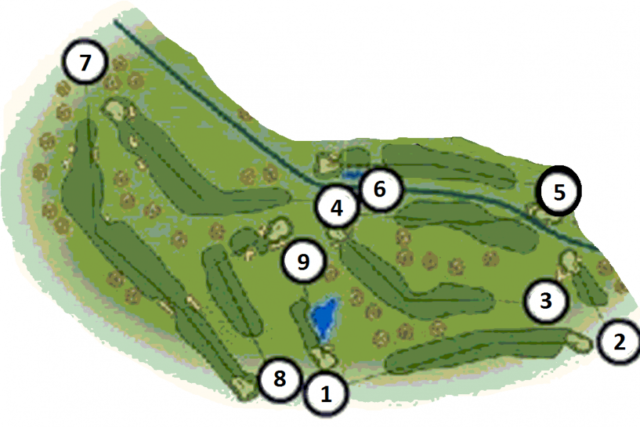
When it comes to golf, most people see it as fun for the rich, and little is known about playing it in places where all of those who are interested in the sport can indulge in this pleasure, but only after mandatory pre-training.
However, the good news is that you can now master the sport of golf without burning a hole in your pocket with the help of the Golf Simulator from The Left Rough.
Recreational sports are for everyone, but professional golfing involves a substantial investment of money. Golfers, however, say that time is the most significant investment when it comes to golf.
The world of golf is going through a time of profound changes, and the dynamics are centered around making the practice of the sport much more agile, as well as promoting higher attendance rates on the playing fields. However, you will always need an item of waterproof clothing, so visit this site to find out more about it.
Nine-hole golf

One of the main initiatives recently has been to implement nine-hole rounds to inspire newbies and allow more experienced ones to play faster and more frequently.
It is an effort that must be made by all the sectors involved. Clubs should be urged to adopt changes over time and to encourage 9-hole play. They could suggest differentiated rates (caddies and ‘green fees’) or ‘tee times,’ among other initiatives.
The example is given by the USGA, based on figures:
“Faster, cheaper golf,” is the catchy phrase on which the United States Golf Association (USGA) has built the implementation of ‘PLAY9’, its 9-hole golf game program.
People don’t have much free time; they are busy. And, apparently, they re getting busier. It’s either at work or with family responsibilities. Setting aside five hours to play 18 holes is a luxury these days.
Since 2014, the USGA has been promoting the 9-hole game as a solution to the decreasing demand for ‘green fees.’ Through their website, golfers can find courses in their community that offer “preferred” 9-hole rates. Besides, on the ninth day of each month, from May to October, member clubs of the governing body of American golf organize competitions under this modality.
And in light of the figures, the experiment has been giving results. In its first year, the ‘scores’ report increase by 13%, and in 2018 it was already 24%, according to the research published by Forbes magazine.
Golf simulators

When evaluating the best golf simulators for your personal needs, the first primary consideration is space. If you have a basement, garage, or patient companion, full-screen kits with projection monitors are best, at least until virtual reality is tough on the golf course. But for those with smaller homes, there are still options that will allow you to hone your skills and keep you moving through the winter without having to set aside a room to practice. And if all you need is a tool to help you perfect the perfect putt, golf simulators have you covered, too. Also, if you are planning to start playing golf first get the best Golf Equipment to improve your golfing skills.
The monthly subscription price to a golf club is over 80 euros, which is higher than that of a paddle club or gym, but there is no time limit for practicing it.
No golfer gets into the sport because they love to stay indoors. But bad weather, winter temperatures, and demanding hours can make going to the streets every day impossible. That’s where golf simulators come into play. The best ones allow you to keep your game from the comfort of your own home or garage. They also allow you to play on a variety of the best golf courses in the world and help you improve your game, and not through simple practice, yes. But by offering a detailed analysis of your stance, swing, and overall performance so that when you hit the physical greens, your game continues to improve.
How to save money on golf – additional tips

- There is no need for you to buy new golf balls. Borrow them.
- Avoid buying designer’s golf attire; you don’t need that at all
- Don’t play during peak hours; if you play after 5 p.m., you can do it for free
- Try to get a lower membership rate
- You could build golf clubs yourself
- Practice at home; set up a home practice area
- Use the Internet and get some online lessons; YouTube can also be a valuable source regarding this matter
- Practice visualization technique
- Read about this sport
- Bringing your food will save you a lot of money
- Instead of using wooden tees, that can be costly, use plastic one instead
The beginners’ golf manual

Many newcomers to golf might find the terms of the sport strange and somewhat comical. But there are good reasons for the silliness factor in golf. Safety is an essential factor since being hit by a ball at high speed is not funny. There is also the fact that a round of golf is comparable to a complicated dance: a typical group of four has to choreograph more than 400 cumulative strokes. Over the years, the golf label has evolved, in large part, to keep everything moving in an orderly fashion.
The rules can be intimidating for rookies, but by understanding just a few underlying principles, an amateur may be perceived as a veteran only after a few games.
PRINCIPLE # 1: If you don’t pay attention, golf can be dangerous. Beginners do not notice it, but it is a security that determines the fundamental flow of the game. So, the rules are strict.
First, stop what you are doing and pay attention when someone hits the ball. Second, after the initial strokes, allow the person furthest from it to play first and move towards your ball only when it is your turn. However, it is okay to walk discreetly to the side of a hole before the other person plays. That way, you are in a position to get to your hole as fast as possible.
PRINCIPLE # 2: Treat others as you would like to be treated. That highlights the fundamental difference between golf and most other sports in which a player interacts directly with an opponent. In golf, the field is your opponent, and the challenge is to see which opponent scores the fewest points against the golf course. To make the competition fair, and by the way fun, all players deserve a chance to do their best. So the rule is simple: the same conditions or circumstances that you need to play better should be used for all participants.

Start by standing still when someone else is hitting and stay in the right place. That is crucial at this point when all participants are in a group. Most players are distracted by someone standing behind their ball. The best place to be is usually facing the player who is going to hit the ball. And the farther, within reason, the better. Also, avoid keeping your ball on the green when another player prepares to make a short shot. Mark the location of your ball with a coin and reposition it when your turn comes.
Learn how to repair the little holes that balls make when they hit the green, and always try to compose not only yours but others’ too. That will make others believe that you know what you are doing.
PRINCIPLE # 3: Know a few rules. The bad news about the rules of golf is that there are many. The good news is that even expert golfers don’t know them all.
PRINCIPLE # 4: Keep up with others. Slow play is the biggest drawback that rookies bring to the field. Above all, be prepared to hit when it’s your turn. Use the time when others are hitting to think about your move, choose the club you will use, and be prepared to hit. Minimize practice swings.
If you need to leave the golf cart away, take several possible clubs with you when walking toward your ball. Park the vehicle or leave your bag between the green and the next tee, so you can quickly get out of a hole in the right direction.
PRINCIPLE # 5: Ask questions. Last year, we sat at a meeting of the Manhattan section of the Executive Women’s Golf Association aimed at new players and realized how strange the culture of golf seems to those who don’t know much about it. Some women, top executives in the financial sector, were asking fundamental questions: How much of a tip do I give to the caddy? Where do I put my bag after the tour?
No one can know these things without playing or reading about it before participating in the game, so don’t be afraid to ask. Golf as an industry doesn’t do everything it should do to make newcomers feel welcome, but most people love to help.














